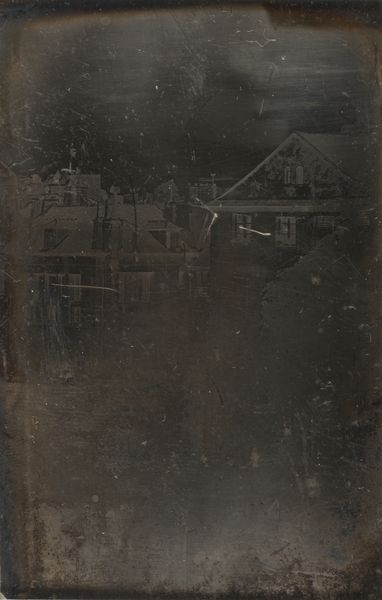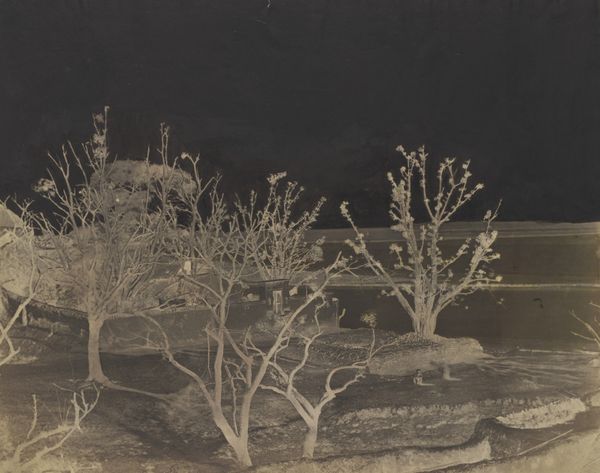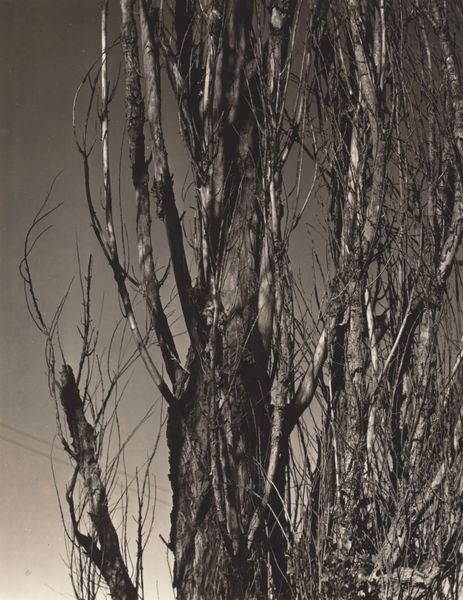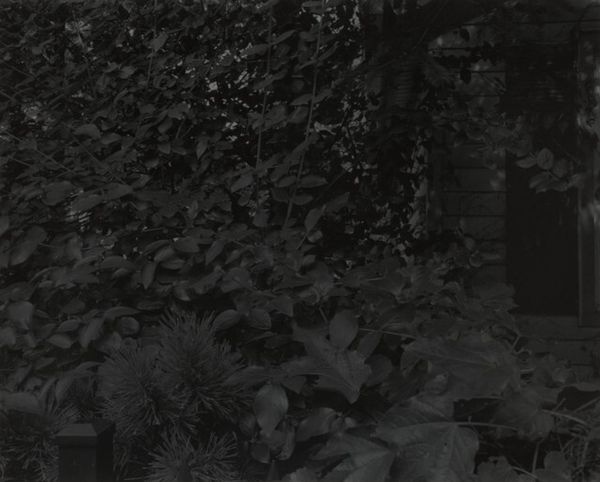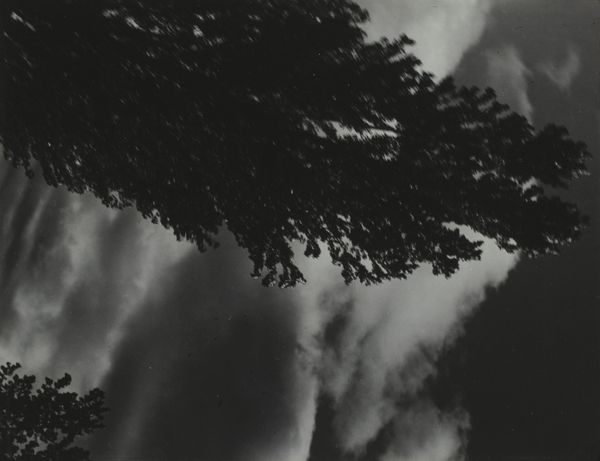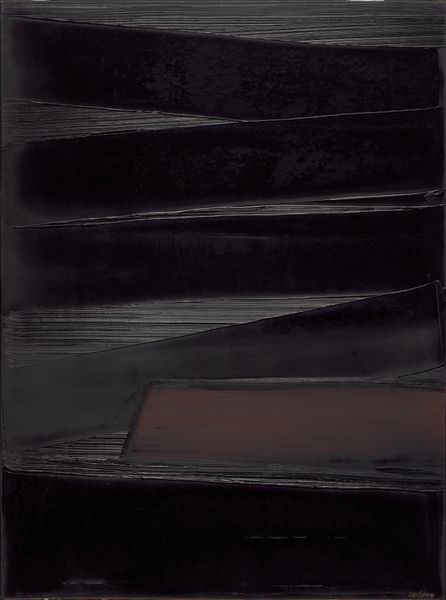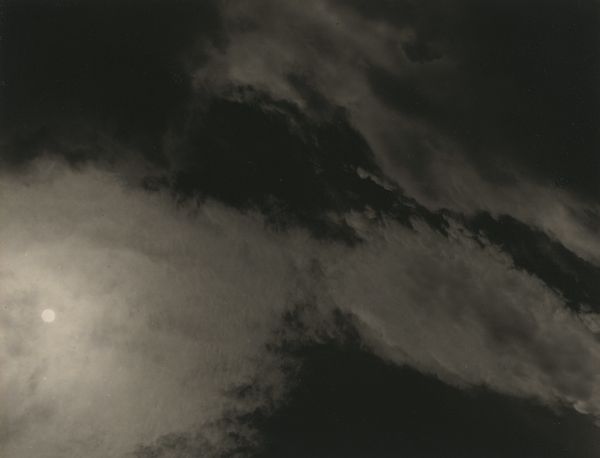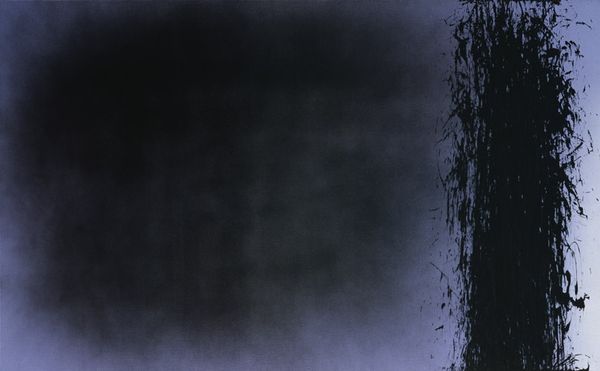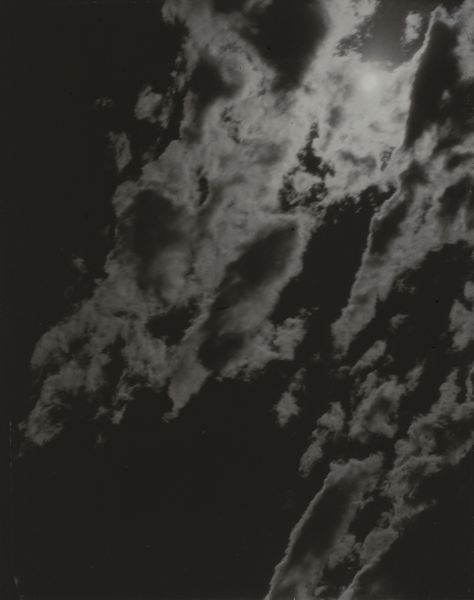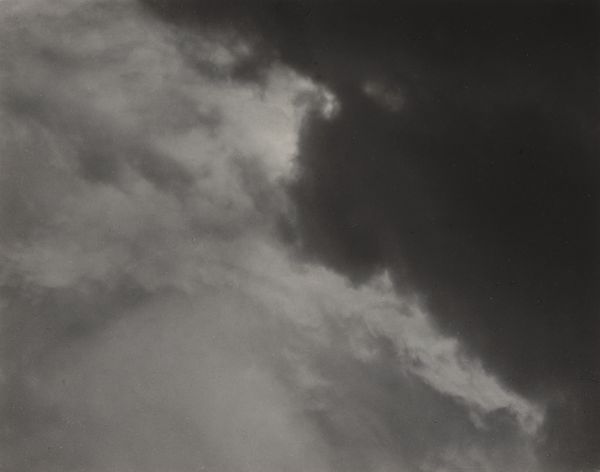
Dimensions: 18.2 × 22.5 cm (image); 18.3 × 22.5 cm (paper)
Copyright: Public Domain
Curator: This is an untitled photograph dating back to the 1860s, currently housed at The Art Institute of Chicago. We attribute it to an anonymous photographer. Editor: The first thing that strikes me is the sheer, ghostly quality of it. The image seems to bleed from the edges. It feels like a memory fading, doesn't it? A dreamscape rendered in shades of grey. Curator: It's an excellent example of early photographic techniques. You can really see the artist working with the limitations of the medium to capture the organic forms of nature. Look at how the dark areas enhance the textural variations and convey spatial depth. Editor: I love that tension between the natural world and this almost artificial rendering. The silhouette of that tower, partially obscured by the trees, hints at civilization being reclaimed by nature, which also mirrors photography reclaiming the image. I'm guessing there was also a degree of manipulation happening here too? Curator: Definitely. Considering the cumbersome process involved in photography during that period—glass plate negatives, long exposure times—it suggests meticulous planning and considerable resources invested in the picture making. Also, the use of the photographic process allowed the photographer to offer his viewer a "realistic" document of nature, filtered through a set of romantic notions. Editor: Almost like early image manipulation, really! The photograph certainly is arresting. I think the darkness also really focuses one's gaze—which brings a really meditative quality. Curator: Right, especially when viewed as a material artifact; an object created through chemical processes reflecting larger industrial and technological shifts in society. Pictorialism and the photographer’s interventions were attempts to elevate photography to the realm of art. Editor: It makes you wonder about all those anonymous figures from history who have made significant contributions that were eventually forgotten! This photo is not just an image, it's a symbol for a bygone era and forgotten people, now re-emerging in art's gallery, for us to reinterpret! Curator: Agreed, reflecting upon how this particular work, conceived anonymously, persists as a tangible link between the 19th and 21st centuries, and a subject of continued exploration and understanding. Editor: Beautifully said. And a timely reminder to embrace and discover both the light and shadows.
Comments
No comments
Be the first to comment and join the conversation on the ultimate creative platform.
